8 Major Ports in Australia
The transcontinental country of Australia is a wealthy economy and the biggest sovereign nation in Oceania. It is rich in natural resources and exports agricultural goods, wool, iron ore, gold, LNG and coal to Japan, China, the US, South Korea and New Zealand. It is also among the world’s biggest exporters of wine.
Australia has an important role in world shipping due to its geographical position in the South Pacific which makes it accessible to numerous countries. Having multiple ports and harbours, Australia conducts the majority of its foreign trade via international maritime routes.
1. Port Hedland
The Port of Hedland lies on the northwestern coast in the Pilbara region of Western Australia and boasts of being the largest bulk export facility in the world, mainly dealing with shipments of iron ore. Other commodities handled at the port include ammonium, fuel oils, lithium, project cargo, breakbulk like cement, Roro, conventional cargo, salt, sulphuric acid, copper, chromite and livestock.
The busiest and biggest shipping port in Australia and Oceania, it handles more than 450 million tonnes of cargo and over 1500 ships every year. Lying in a resource-rich region well-linked with important maritime routes, the port has been witnessing increased cargo traffic.
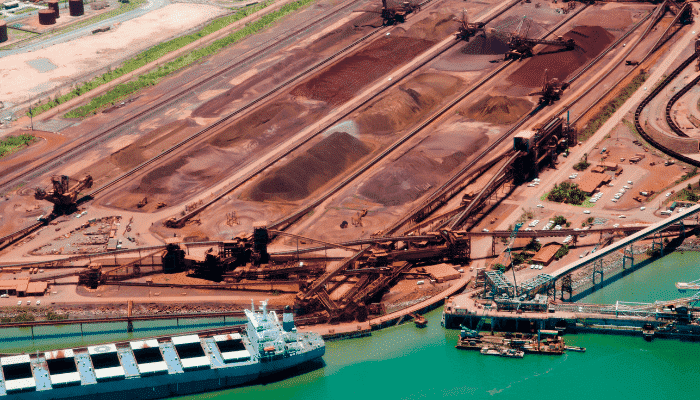
The port was established in the late 1800s to serve the region’s pastoral industry. Known as the Mangrove harbour, it was renamed after a sailor called Peter Hedland, who visited the rudimentary facility in 1896. Finds of gold in the neighbouring region made it famous, and in 1909 the port was linked with railways.
The inner port incorporates 12 berthing areas out of which 4 berths are owned and operated by the Pilbara ports authority while six are operated by BHP Billiton, a mining company. The last two berths are leased to Fortescue Metals Group. Currently, the port is being expanded for the construction of two additional wharves for accommodating increased iron ore and lithium exports. The port is accessible to the biggest ships with an LOA of 330 m and a draught of 19.9 m.
2. Port of Adelaide
Adelaide port lies just a few kilometres inland from the St Vincent Gulf in Adelaide city and is the prime shipping port of Southern Australia and a crucial maritime gateway exporting vehicles, grains, automobile parts, ores, concentrates and wine. It also deals with containers, metals, steel and iron goods, mineral sands and agro-based products. Adelaide port handles more than 110 million tonnes of cargo and over 1000 ships annually.
Comprising an outer and inner port area having over 21 wharves, the port is one of the earliest historic settlements of the region, having direct maritime connections with major Middle Eastern and Asian ports while it receives shipments from the United States and SouthEast Asia.
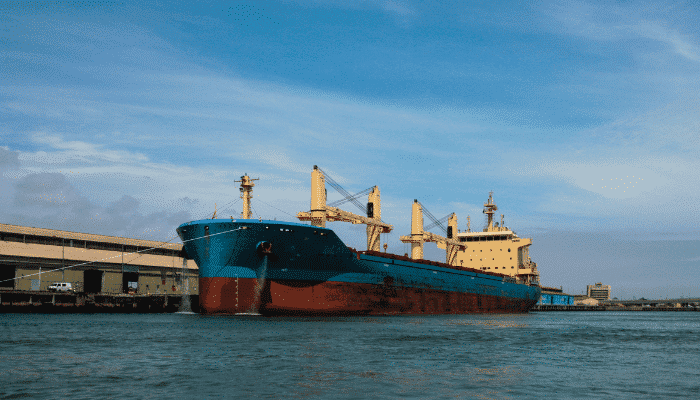
The inner port has 18 wharves that mainly handle RORO and bulk cargo such as processed meat, fruits, wool, soda ash, cement, tallow, metals and manufactured goods. It is decked with modern port equipment and cold storage facilities along with 6 silos, grain elevators and the biggest cranes for handling imports of timber, petrol, fertilisers, paper etc.
The outer port has six specialised berths for dealing with general cargo and livestock. It also houses the port’s container terminal, which handles all the container goods on its two designated docks spanning 600 m, directly connected to the country’s main cities via railways and roadways. Covering 24 hectares with a total storage space of 3500 sq m, the terminal is equipped with 150 reefer plugs.
3. Port of Brisbane
Brisbane port is Australia’s third-biggest container facility located on the eastern coastline at the mouth of the river Brisbane before it meets the Bay of Moreton. A key port of Queensland it serves an expansive agriculturally diverse area, shipping dairy goods, wool, processed meat, sand, sugar and canned food. Dominated by manufacturing plants, the port city has oil refineries, sawmills, shipyards, rubber factories etc. It deals with imports of crude oil, gypsum, chemicals, wood, construction material, and transport equipment.
Approximately 31,878,000 tonnes of cargo, 896,205 TEU and 2000 ships are handled every year at the Brisbane port. It can accommodate vessels with a maximum LOA of 294 m, beam of 45 m and a 15 m draught.
The port comprises 27 wharves with a total quay length of more than 1700 m. Out of these 7 docks are dedicated to RoRo cargo, while 5 berths handle only liquid bulk, including chemicals. The port also has a passenger berth for handling cruise ships and yachts.
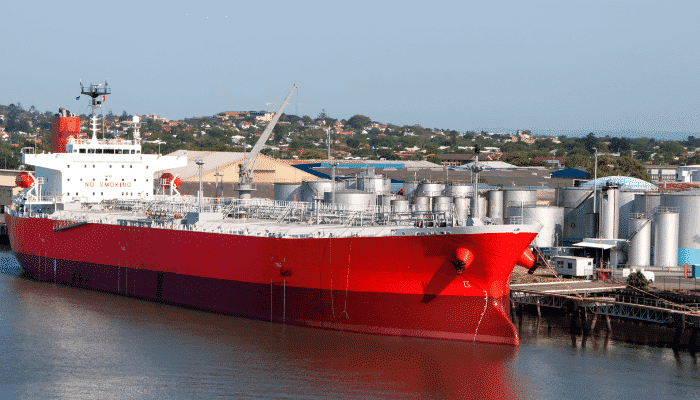
The port’s Container terminal incorporates 8 berths spanning 1600 m. It is leased to two stevedoring companies, the DP World Brisbane, which owns port equipment such as the Panamax and post-Panamax cranes, while the Port Brisbane Corporation owns the wharves and carries out port improvements.
It also has a specialised coal berth, a grain dock, a clinker plant and also a separate berth for handling wood chips at the Drybulk terminal. The liquid bulk terminal has 4 berths for dealing with crude oil, linked through pipelines to the port’s 2 oil refining plants.
4. Port of Melbourne
Melbourne port counts among the busiest port facilities in Australia, handling a significant percentage of the country’s container traffic. It is situated at the northern tip of the Bay of Philip in Victoria. The port city houses the automotive industry while functioning as a crucial financial, business and manufacturing hub. It is a growing centre of technology and also a key tourism destination in Australia. Around 3,320 vessels, 79,710,000 tonnes of cargo, including 2,401,000 TEU and more than 70,000 passengers, are handled at the port annually.
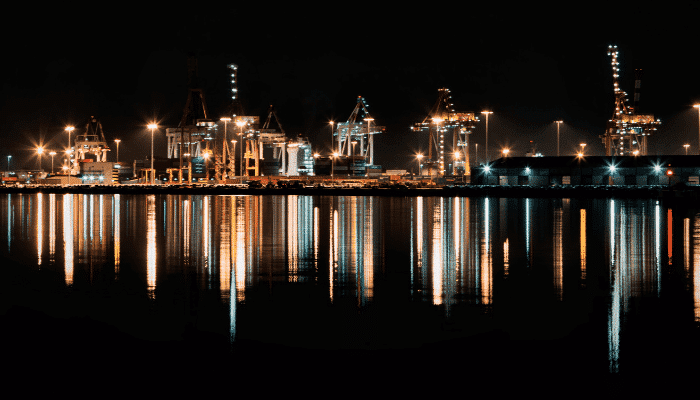
The port has 34 cargo handling facilities such as the station pier, the Gellibrand dock at Williamstown etc. It also has five river docks, 2 container terminals at the Swanson dock and 3 multipurpose berths for handling timber and automobiles. Specialised berths handle cargoes of cement, sugar, grains, gypsum, molasses and petrochemicals at the Dry bulk and liquid bulk terminals. A famous cruise destination, the port also has 2 cruise berths with bunkering and freshwater facilities. All the docks can accommodate ships with a maximum LOA of 290 m and a draught of 12 m.
The port is a major trade hub for the Southeastern region of Australia, connecting Tasmania, Victoria and New South Wales. It functions as the major port for Tasmania, linking the state to international markets and is also part of the national rail network joining south Australia with the eastern region.
5. Port of Darwin
Named after the naturalist Charles Darwin who had visited this facility, Darwin port is the primary port serving Northern Australia, lying on the inlet of Beagle Gulf opening to the Timor Sea. The port is important for the local economy as it supports the region’s pastoral and mining sectors, including numerous local industries by exporting their products such as tiles, bricks, uranium, fruits, pearls, zinc and lead concentrates, LNG, container goods, livestock and fodder.
Around 1500 ships, 3775,638 tonnes of cargo and 9000 TEU are handled at this port every year. The biggest ship that berthed at the port was the Saiko Maru weighing 81,000 DWT. The port is also a major exporter of cattle and is transforming into a crucial regional oil and natural gas hub linked with the world’s major terminals.
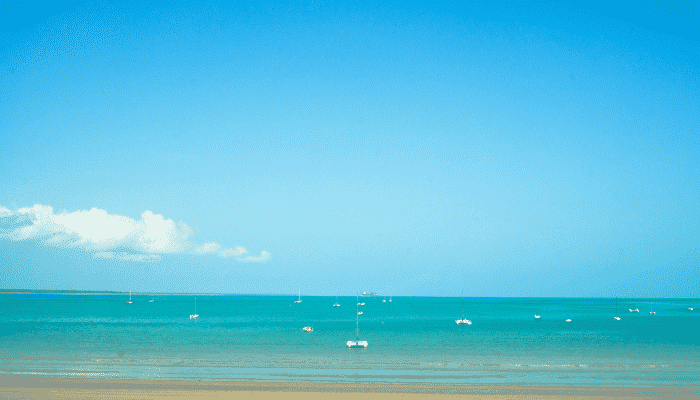
It has numerous wharves with designated berths for handling diverse cargo. The iron ore dock comprises a 145 m long berth with two mooring dolphins for accommodating the biggest bulk carriers. Similarly, the fort hill dock spans 310 m and has multipurpose berths with inbuilt ramps for handling roro.
The Stokes hill wharf has berths utilised by cruises, naval ships, charter ships and fishing boats. Ship repair and maintenance services are provided at the port’s fishing harbour and Mooring basin located at Frances Bay. It has 80 berths equipped with showers, washrooms, workshops etc. At the western end of the wharf is a precinct, an 1800 sq m facility housing a tourist help desk, cafes, restaurants and souvenir shops.
6. Port of Sydney
Situated on the eastern Australian coast, the Sydney port is a natural harbour that provides commercial shipping as well as recreational services. Offering ship repair, bunkering and logistics, the port is among Australia’s prominent container handling facilities dealing with varied cargo such as petroleum goods, dry bulk, conventional cargo and containers. It also handles shipments of machinery, household items, chemicals, paper, packaged food, fruits and veggies.
Spanning 42 hectares, it comprises 11 berths and some private berths at the Gore cove. It also has a bulk terminal with three dedicated berths for handling sugar, cement and salt, while the liquid bulk terminal handles mainly LPG and chemicals. Sydney port also boasts of being the only Australian facility having two cruise ship terminals. It handles around 29,205,000 tonnes of cargo, including 1,777,000 TEU and 250,000 passengers every year.
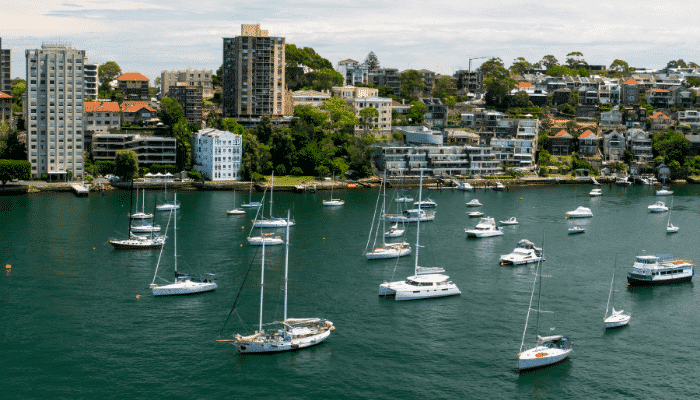
The botany bay is situated at the mouth of the Sydney harbour, hence the Sydney port is also referred to as the Botany Bay port. This subsidiary facility was established to cater to the growing maritime container traffic and reduce the congestion of the main port. On the southern part of the bay is the Kurnell terminal which is New South Wales’ primary container and petrochemical port, handling imports of crude oil and petroleum goods. Approximately 1600 ships, 20,00,000 tonnes of cargo and 1600,000 TEU are handled at Botany Bay every year.
7. Port of New Castle
Newcastle port lies at the mouth of the river Hunter and is a major coal export facility covering 455 hectares with 5500 m of wharfage. Additionally, the port also has facilities for dealing with container goods, Roro, bulk, general cargo and tankers. It receives shipments of alumina, cement, fertilisers, chemicals, petroleum, coke, and phosphate and exports coal, grains, iron and steel, woodchips, zinc ore, and mineral concentrate. Approximately 3,3200 ships, 114,505,000 tonnes of cargo and 11,500 TEU are handled at Newcastle port.
The eastern port area has numerous berths with a draft of 12 m, a 4-hectare general cargo storage area and a 7119 sq m warehouse space. The western port handles grains and is equipped with an automated conveyor belt system for easy operations along with 2 silos with a capacity of storing 150,000 tonnes. Another berth is utilised for dealing with project cargo.

Steelworks wharf caters to the shipments of copper, lead and zinc and has a 50,000-ton storage facility. The port’s Carrington Coal terminal covers 41 hectares and has three wharves with a maximum capacity of handling 25 million tonnes of coal annually. Another terminal called the Kooragang spans 160 hectares and has a capacity for handling 76 million tonnes of cargo annually.
The dry bulk terminal deals with fertilisers, phosphates, and ores on its 3 specialised berths. Equipped with 10,000 m sheds, it also has two yards with a storage capacity of 30,000 tonnes. The port’s liquid bulk terminal has 9 storage tanks for keeping 9000m3 of oil and tallow.
8. Fremantle Port
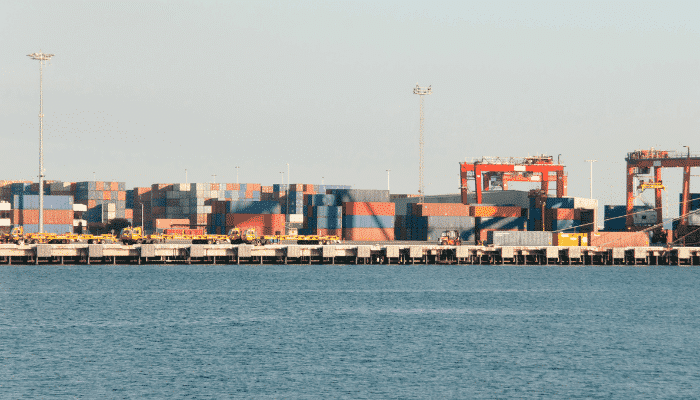
It is one of the largest Australian ports, located at the entrance of the Swan River on the country’s southwestern coastline. It is not only a busy commercial port but also a cultural centre and a renowned cruise destination. Comprising an inner harbour and an outer harbour, it spans 160 hectares. Around 25,045,192 tonnes of cargo, 500,000 TEU, 1580 ships and 1450 passengers are handled at the port annually.
The inner harbour accommodates container ships, naval vessels, and cruises and has facilities for handling vehicles, livestock and general cargo. It includes the North dock, which houses 2 container terminals and numerous general cargo berths. The Victoria Wharf has a ferry terminal, a small market and a museum. The outer port deals with dry and liquid bulk cargo like grains, caustic soda, alumina, sands, cement clinker, sulphur etc.
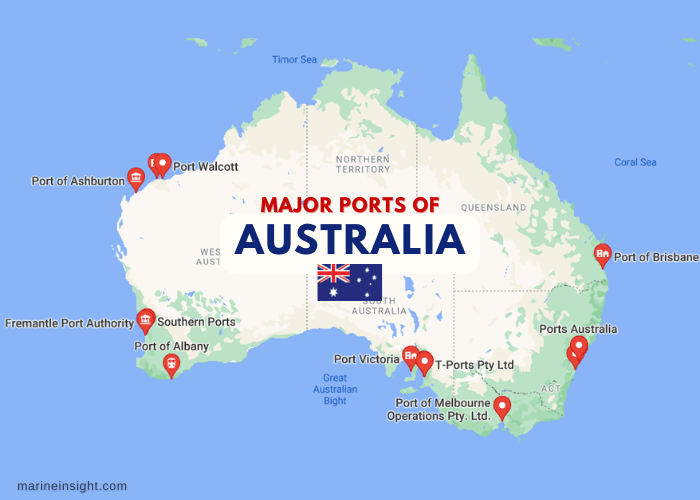
You might also like to read:
- 10 Major Ports In The Philippines
- 7 Major Ports in Malaysia
- 6 Major Ports in Argentina
- 5 Major Ports in Portugal
- 5 Major Ports In Japan
Disclaimer :
The information contained in this website is for general information purposes only. While we endeavour to keep the information up to date and correct, we make no representations or warranties of any kind, express or implied, about the completeness, accuracy, reliability, suitability or availability with respect to the website or the information, products, services, or related graphics contained on the website for any purpose. Any reliance you place on such information is therefore strictly at your own risk.
In no event will we be liable for any loss or damage including without limitation, indirect or consequential loss or damage, or any loss or damage whatsoever arising from loss of data or profits arising out of, or in connection with, the use of this website.
Do you have info to share with us ? Suggest a correction
Disclaimer :
The information contained in this website is for general information purposes only. While we endeavour to keep the information up to date and correct, we make no representations or warranties of any kind, express or implied, about the completeness, accuracy, reliability, suitability or availability with respect to the website or the information, products, services, or related graphics contained on the website for any purpose. Any reliance you place on such information is therefore strictly at your own risk.
In no event will we be liable for any loss or damage including without limitation, indirect or consequential loss or damage, or any loss or damage whatsoever arising from loss of data or profits arising out of, or in connection with, the use of this website.
Latest Maritime Knowledge Articles You Would Like:
Subscribe To Our Newsletters
By subscribing, you agree to our Privacy Policy and may receive occasional deal communications; you can unsubscribe anytime.
















What happened to Hobart on this
One of the best deep ports in the nation